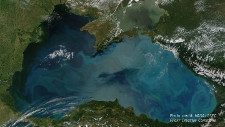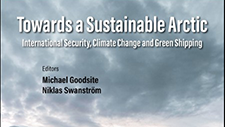Climate Change and Human Security in a Regulatory Multilevel and Multidisciplinary Dimension: The Case of the Arctic Environmental Ocean
Sandra Cassotta, Michael Evan Goodsite and Kamrul Hossain
Climate change determines the retreat of ice. This has created a huge access to petroleum, attracting strong interest by some states, especially energy hungry-countries and increasing competition between states, resulting in tension and threats, even military ones. Climate change has, therefore, to be perceived as a threat to international peace and security. However, recognition of the nexus between climate change, human security and conflicts in the prism of international law and politics is weak, leading to a difficulty institutions have for regulating and governing this nexus. Climate change can thus be considered as threat multiplier, something that can exacerbate existing tensions, and the resolution of this threat will be the most difficult task to achieve where adaptation takes place in fragile and vulnerable areas, such as the Arctic, an area which is highly exposed to environmental risks and uncertainty. The region is populated by one of the most vulnerable groups, the indigenous people, such as the Inuit of the Arctic with low adaptive capacity compared to the pace of change. In the Arctic Environmental Ocean governance, access to natural resources, the potential of navigability, extension of maritime borders, and the desire of some states to extend their jurisdiction, all depict a situation of criss-crossing potential conflicts that could escalate and should, therefore, be perceived as “tinderboxes”. This article relatedly explores the existing legal framework in the case of the Arctic environmental ocean to provide effective and legitimate governance for a peaceful and “stable space” to prevent threats from both Arctic and non-Arctic states. It will be shown that Arctic Environmental Ocean activities need multi-level governance (global, regional, national and local) and that Arctic environmental security challenges cannot be addressed without a broader holistic vision.
The article treats the United Nations regulatory level and how it could support many issues which have an impact on Arctic Environmental Ocean governance, and the Law on the Sea. Methodologically, the way to increase effectiveness to maintain and stabilize the Arctic environmental ocean governance entails that “stability” is achieved by integrating elements of climatology, international law, political science and agent based modelling to act in a preventative way to protect the Arctic environmental ocean and its societies and formulate effective policies. The conclusion led on how the current Arctic environmental ocean framework could be changed in order to increase effectiveness by incorporating risk analysis into a universal equation based model to redesign a new regulatory package at United Nations level and recommend changes at institutional level.
Related Publications
-
China as a Black Sea Actor: An Alternate Route
China’s international role has expanded rapidly in the last decades, and the Greater Central Asian region, Europe, and the Middle East, to which the Black Sea region (BSR) connects, are […]
-
Towards a Sustainable Arctic: International Security, Climate Change and Green Shipping
The Arctic’s environment, economics, and politics are changing rapidly, and the conflicting interests among stakeholders mean that it lacks sustainable political and military cooperation. States bordering the Arctic — Russia, […]

